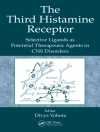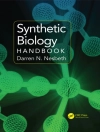Attention is a key psychological construct in the understanding of human cognition, and the target of enormous efforts to elucidate its physiological mechanisms, as the wealth of literature—both primary and secondary—attests (for recent compilations see Itti, Rees, & Tsotsos, 2005; Paletta & Rome, 2008; Posner, 2004). But in addition to asking what attention actually is, decomposing and analyzing its varieties, or delimiting its neurobiological mechanisms and effects, in this volume we want to explore attention somewhat differently. We believe that a full-fledged theory of attention must consider its workings in the context of motivated, goal-directed, and environmentally constrained organisms. That attention is related to goal-directed behavior is not news. What the contri- tions to this volume do suggest, however, is the existence of fundamental links between attention and two key processes that are crucial for adapted conduct: go- directed behavior and cognitive control. Importantly, they show that these relations can be explored at multiple levels, including neurodynamical, neurochemical, evo- tionary, and clinical aspects, and that in doing so multiple methodological challenges arise that are worth considering and pursuing. The reader will find here, therefore, a selection of contributions that range from basic mechanisms of attention at the n- ronal level to developmental aspects of cognitive control and its impairments. Another trend that will become evident is that, in different ways, the authors stress the need to understand these issues as they unfold in natural behavior (both healthy and pathological), thus arguing for a more ecological approach to these questions.
Tabela de Conteúdo
Attentional Networks: Basic Mechanisms and Methodological Issues.- Neuronal Signatures of Selective Attention – Synchronization and Gain Modulation as Mechanisms for Selective Sensory Information Processing.- Intracortical Recordings During Attentional Tasks.- The Spatiotemporal Dynamics of Visual-Spatial Attention.- Attention and Neurodynamical Correlates of Natural Vision.- Attending to the Stream of Consciousness – A Methodological Challenge.- Crossmodal Attention–The Contribution of Event-Related-Potential Studies.- Measuring and Modulating Hemispheric Attention.- A Connectionist Perspective on Attentional Effects in Neurodynamics Data.- From Attention to Behavioral Control.- From Goals to Habits – A View from the Network.- Dynamics of a Neuromodulator – I. The Role of Dopaminergic Signaling in Goal-Directed Behavior.- Dynamics of a Neuromodulator – II. Dopaminergic Balance and Cognition.- Clinical and Developmental Issues.- Prefrontal Cortex and Control of Behavior – Evidence from Neuropsychological Studies.- The Maturation of Cognitive Control and the Adolescent Brain.- Electrophysiological and Genetic Markers of Attention Deficit–Hyperactivity Disorder: Boundary Conditions for Normal Attentional Processing and Behavioral Control.- The Aberrant Connectivity Hypothesis in Schizophrenia.- Erratum.












